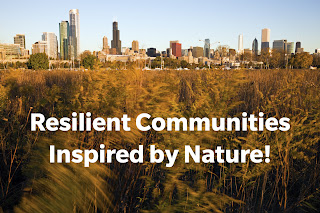My daughter and I have been sick with the flu for a week now. This is a typical fate this time of year when viruses linger in the air. But last night as I told her the story of her immune system, I was grateful to my biologist collaborator, Maria O'Farrell, who during the creation of our "BEND, Don't Break" Naturally Resilient workshop, taught me all about my immune system so that I could tell it to my daughter. The story I told her goes a little something like this:
"Once upon a time, there was a virus. This virus came into our house on the hands of a little boy, otherwise known as brother-the-carrier-monkey. He picked it up at school by touching something and then touching his eyes or mouth. He then came home and touched many things in our house. Meanwhile, this virus was not alone - it was busy invading our cells and having babies and its babies were having babies, until there was virus all over our house...and in our bodies. And we got sick.
But then, an amazing thing happened! We fought back! Our bodies have an immune system - something akin to a police force that is always running throughout our bodies to determine which parts are "me" and which invaders are "not me." When the police (white blood cells) find something that is "not me," or just not right, they send out a signal to other police cells to see if they found an invader too. If they both have an invader - and know that others do too - they pass a threshold for action and tag the invader for destruction! Then, the police cells go for backup. They go back to police headquarters (the closest lymph node) and replicate themselves (but a new and improved version that can better fight the invader!) who then return in full force to attack the virus and they beat it up until it explodes! And this is happening all over your body and will keep happening, until all the virus is dead.
So you see, your body is resilient! By looking out for potential problems, knowing when there is enough of a problem to react, and learning from experience, your body is able to not over react or under react to potential harm, but your response is, like Goldilocks, just right. Think about what it would be like to not have an immune system! We couldn't live on this planet because we literally swim in viruses in the air like a fish swims through plankton in water. Now think about THAT as you go to sleep tonight!"What can we learn about resilience from our immune system?
Our immune systems are our body's adaptive strategy to respond to disturbances that we know will happen, but we don't know when and we don't know how bad it will be. And there is quite a bit we can learn about resilience from adaptive immune systems.
What instances can you think of where we know a disturbance will happen, but we don't know when and we don't know how bad it will be? This makes me think of economic fluctuations, talent migration
necessitating personnel changes, energy and maintenance costs fluctuations, and other cyclical and
expected disturbances. By looking at nature through the lens of antigen invasion in an adaptive immune system, we can begin to create human systems which effectively adapt to changing conditions and result in effective, efficient information exchange coupled with a regulated response and held in balance by feedback loops. I could go into more detail, but again, I have the flu and the resources usually allocated to my brain are currently being rerouted to my immune system.
Want to know more? Talk to us about our "BEND, Don't Break Naturally Resilient Workshop" where you can learn more about this and other biological phenomena and apply nature's lessons to your business or organization!
What instances can you think of where we know a disturbance will happen, but we don't know when and we don't know how bad it will be? This makes me think of economic fluctuations, talent migration
necessitating personnel changes, energy and maintenance costs fluctuations, and other cyclical and
expected disturbances. By looking at nature through the lens of antigen invasion in an adaptive immune system, we can begin to create human systems which effectively adapt to changing conditions and result in effective, efficient information exchange coupled with a regulated response and held in balance by feedback loops. I could go into more detail, but again, I have the flu and the resources usually allocated to my brain are currently being rerouted to my immune system.
Want to know more? Talk to us about our "BEND, Don't Break Naturally Resilient Workshop" where you can learn more about this and other biological phenomena and apply nature's lessons to your business or organization!









